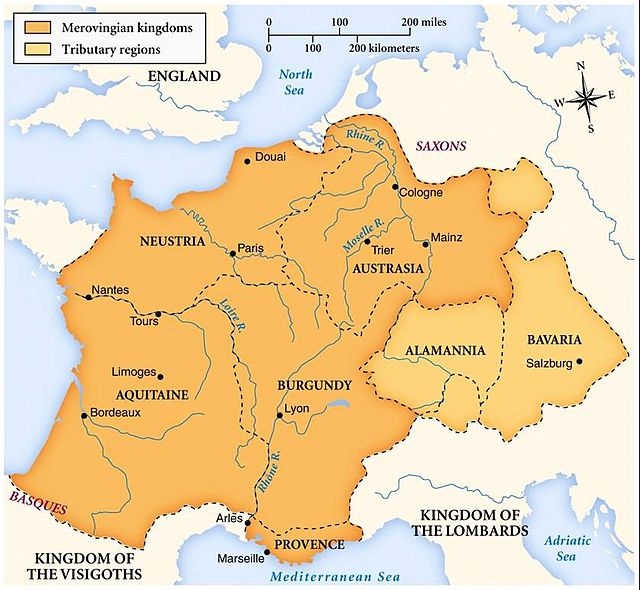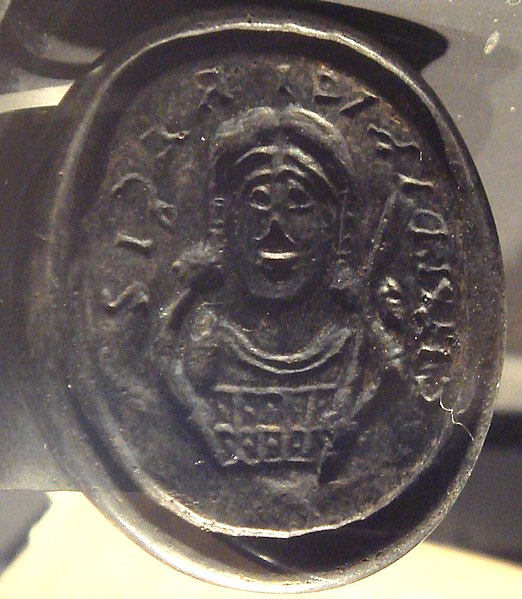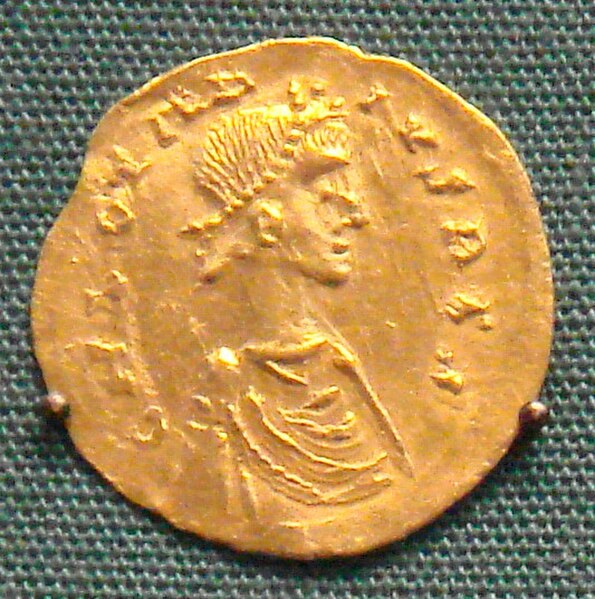The Merovingian dynasty was the ruling family of the Franks from around the middle of the 5th century until 751. They first appear as "Kings of the Franks" in the Roman army of northern Gaul. By 509 they had united all the Franks and northern Gallo-Romans under their rule. They conquered most of Gaul, defeating the Visigoths (507) and the Burgundians (534), and also extended their rule into Raetia (537). In Germania, the Alemanni, Bavarii and Saxons accepted their lordship. The Merovingian realm was the largest and most powerful of the states of western Europe following the breaking up of the empire of Theodoric the Great.
Merovingian dynasty
Signet ring of Childeric I. Monnaie de Paris.
Frankish gold Tremissis, imitation of Byzantine Tremissis, mid-6th century.
Coin of Clotaire II, 584–628. British Museum.
The Franks were a western European people during the Roman Empire and Early Middle Ages. They began as a Germanic people who lived near the Lower Rhine, on the northern continental frontier of the empire. They subsequently expanded their power and influence during the Middle Ages, until much of the population of western Europe, particularly in and near France, were commonly described as Franks, for example in the context of their joint efforts during the Crusades starting in the 11th century. This expansion came about because the romanized Frankish dynasties based within the collapsing Western Roman Empire first became the rulers of the whole region between the rivers Loire and Rhine, and then subsequently imposed power over many other post-Roman kingdoms both inside and outside the old empire.
Aristocratic Frankish burial items from the Merovingian dynasty
A 19th century depiction of different Franks (AD 400–600)
Detail of the Tabula Peutingeriana, showing Francia at the top
A 6th–7th century necklace of glass and ceramic beads with a central amethyst bead. Similar necklaces have been found in the graves of Frankish women in the Rhineland.








